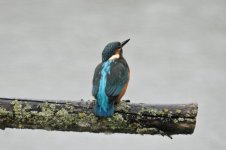Finlayson
Nowadays I prefer a glass of wine.
Hi Folks, not an ID question this but a general question - why does the blue back stripe on a KF appear so bright and colourful compared to the rest of the blue plumage ? ... is it becouse :-
1. Its a genuinly different colour ?
2. The feathers are the some colour as the rest of the plumage but
formed in a ridge which refracts the ligh at a diferent angle.
Your wise input and observations greatly appreciated .... John Finlayson.
1. Its a genuinly different colour ?
2. The feathers are the some colour as the rest of the plumage but
formed in a ridge which refracts the ligh at a diferent angle.
Your wise input and observations greatly appreciated .... John Finlayson.




